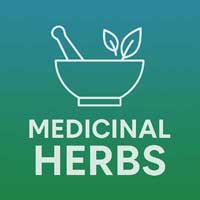Natural Remedies - Healing with Medicinal Herbs
Natural Treatment of Menstrual Problems with Medicinal Herbs
The most common menstrual problems are the absence of menstruation (amenorrhea) and painful menstruation (dysmenorrhea). Amenorrhea is classified as primary, when menstruation has not occurred at all, or secondary, when periods were initially regular but become infrequent or stop entirely.
Primary amenorrhea may result from delayed puberty, especially if hereditary, and in rarer cases, from deformities of the reproductive organs. Amenorrhea is considered present if menstruation is absent for at least three cycles. A girl who has not had her first period by age 16 should be evaluated for primary amenorrhea.
Infrequent and light menstrual cycles (oligomenorrhea) are very common in early puberty and are not typically concerning. In the first few years of menstruation, cycles are often irregular. Even normal cycles in adult women can vary by a few days each month.
In some women, menstrual bleeding occurs every three weeks, while in others, every five weeks. The intensity of bleeding also varies, being heavy or light. Sometimes a period may be missed, followed by heavy bleeding, likely due to a skipped ovulation rather than a miscarriage.
It is concerning if cycles are shorter than 21 days, bleeding lasts more than eight to ten days, or cycles vary significantly over several months. Such cases suggest ovulation issues.
All women experience uterine contractions during menstruation, but for some, these cramps are frequent and intense, known as dysmenorrhea. Dysmenorrhea can be primary or secondary.
Primary dysmenorrhea results from normal uterine muscle contractions and affects over half of menstruating women. Secondary dysmenorrhea is caused by abnormal medical conditions, such as endometriosis.
Painful menstruation can occur in early puberty or as a secondary issue after years of pain-free periods. Pain may resemble typical cramps but can be so severe that a woman is bedridden.
Dysmenorrhea can be triggered by circulatory issues, infections, uterine tumors, endometriosis, or polyps. However, the most common cause is hormonal imbalances due to excessive estrogen or insufficient progesterone, often linked to stress.
Menstrual problems typically affect young girls, anxious women, women under stress, or those in perimenopause. They can be caused by infections, intrauterine contraceptive devices, other contraceptives, certain medications, systemic illnesses, or blood disorders.
Self-Help Measures for Natural Treatment of Menstrual Problems
Under strict medical supervision, these holistic approaches may help alleviate menstrual problems and support women’s health alongside prescribed treatments:
- Herbal Teas: Drink chamomile, yarrow, or feverfew tea to reduce inflammation and menstrual pain, with doctor’s approval.
- Herbal Tinctures: Use ginger or cramp bark tinctures for pain relief, or yarrow, cumin, and wormwood for amenorrhea, under medical guidance.
- Topical Remedies: Massage the abdomen with diluted lavender essential oil to ease cramps, as advised by a healthcare provider.
- Dietary Adjustments: Eat light, alkaline foods like fresh fruits and vegetables to support hormonal balance and reduce inflammation.
- Stress Management: Practice yoga, proper breathing, or relaxation techniques to reduce stress-related menstrual issues.
- Regular Checkups: Schedule annual medical exams to monitor reproductive health and address underlying causes early.
Important Note
Persistent or severe menstrual problems, such as cycles shorter than 21 days, bleeding lasting over 8–10 days, or absent periods, may indicate serious conditions like endometriosis or hormonal disorders. Consult a healthcare provider promptly for proper diagnosis and treatment. Natural remedies should only complement, not replace, prescribed treatments like hormonal therapy or surgery to ensure safe and effective management.





